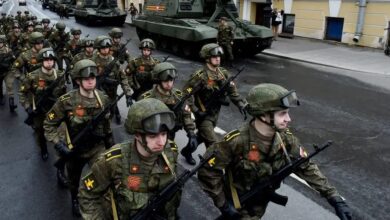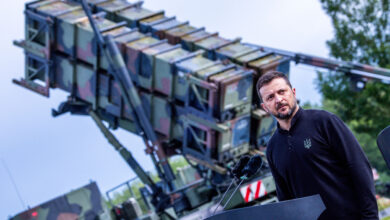A Russian drone developer is working on a first-person view (FPV) drone swarm capability as Ukraine already deployed it earlier this year.
Transbaikal region-based Veter is developing the capability controlled by a single workstation, Russian state-backed TASS reported, citing a press release by the company.
“Work is currently underway to implement new AI-related technologies,” the outlet quoted the press release as stating.
“We are working on launching the so-called FPV drone swarm. The drone swarm will be controlled from one workstation. Each drone is loaded with a flight mission, and, in fact, the devices fly autonomously with video transmission.”
3,000 Veter Drones Monthly
Meanwhile, AI-backed Veter drones have already been deployed on the battlefield, capable of automatic target detection and striking.
A total of 3,000 drones are being delivered monthly to the Russian Armed Forces deployed in Ukraine, TASS reported, citing the developer.
“The features of artificial intelligence allow the Veter FPV drone to be aimed at a target without additional efforts from the operator,” the outlet quoted from a previous Veter press release.
“A target indicator appears, the target is captured, and the drone flies to it autonomously. This allows it to achieve the desired results in the conditions of electronic warfare.
“Our drones have successfully passed flight tests of the Main Directorate for Innovative Development of the Russian Ministry of Defense, which is confirmed by the relevant protocols.”
Ukraine Deploys FPV Swarm
A Russian serviceman narrated the first reported use of an FPV drone swarm by Ukraine in January to the Russian newspaper Izvestia.
He said that the drone flock was controlled by a “Repeater drone queen” from close range.
“A flock of around 10 — the Queen is somewhere above at a high altitude in a small detection range. It brings the flock of drones, which then descend onto positions and start working,” Business Insider quoted the Russian servicemen as speaking to an Izvestia correspondent.
The mother drone is responsible for target detection and ordering the flock to attack. Until then, the horde waits on the ground, saving their batteries.
“When a large mother drone spots targets, the kamikazes take off, sometimes several meters from the target, and attack. If the Queen is eliminated, then her entire flock can be neutralized,” Newsweek quoted the Izvestia correspondent as saying.
Ukraine again deployed the capability during the defense of Kharkiv in June, thwarting Russian attacks consisting of tanks, armored fighting vehicles, and armored personnel carriers.
“The little birds [drones] are constantly flying from launch sites to our positions and back. With drones the situation is critical, you can only hide. We can jam the Mavics [a cheap Chinese quadcopter] easily, but against FPV drones we have almost nothing that works,” Kyiv Post quoted a Russian drone unit volunteer’s post as stating.












